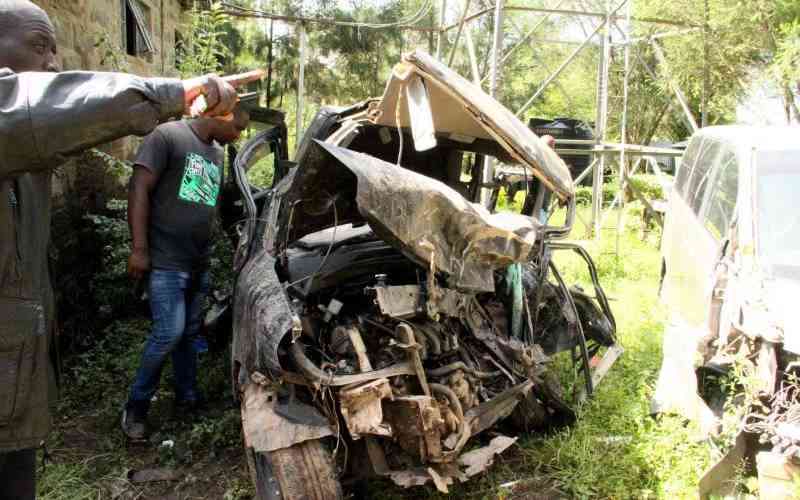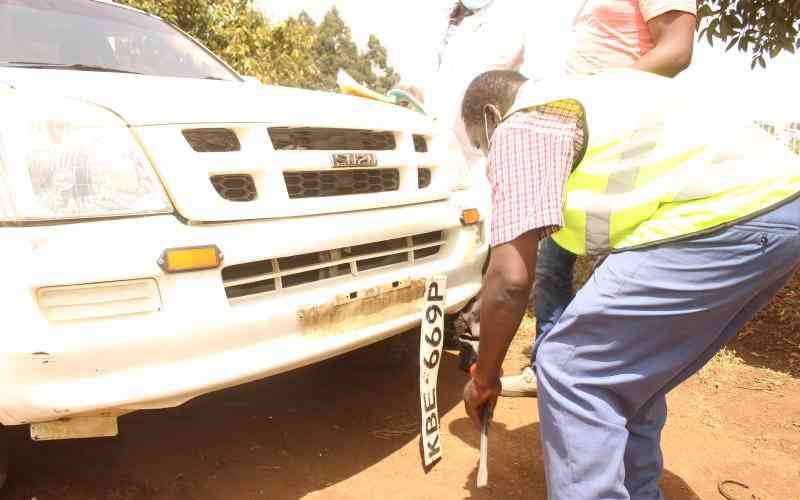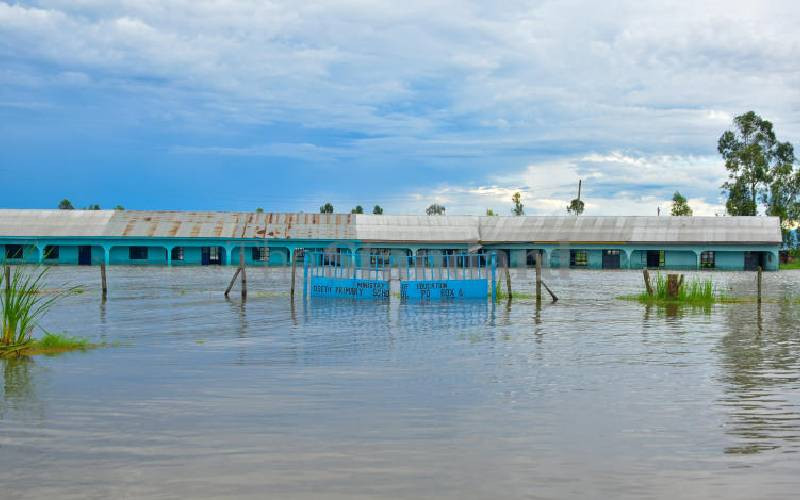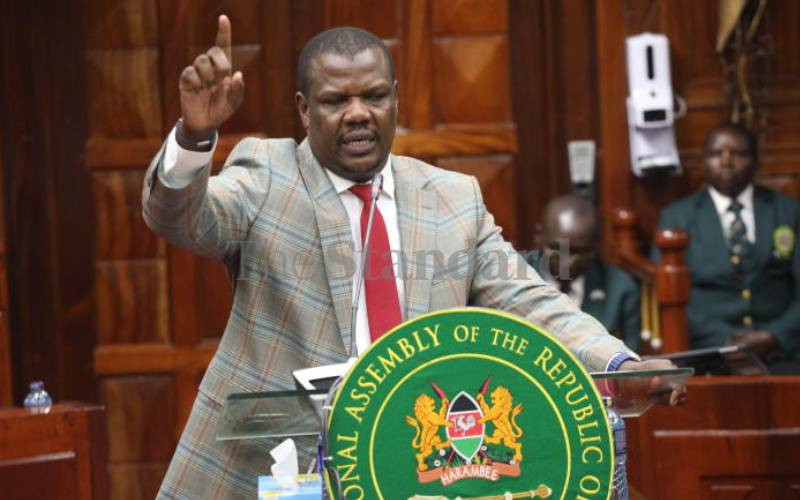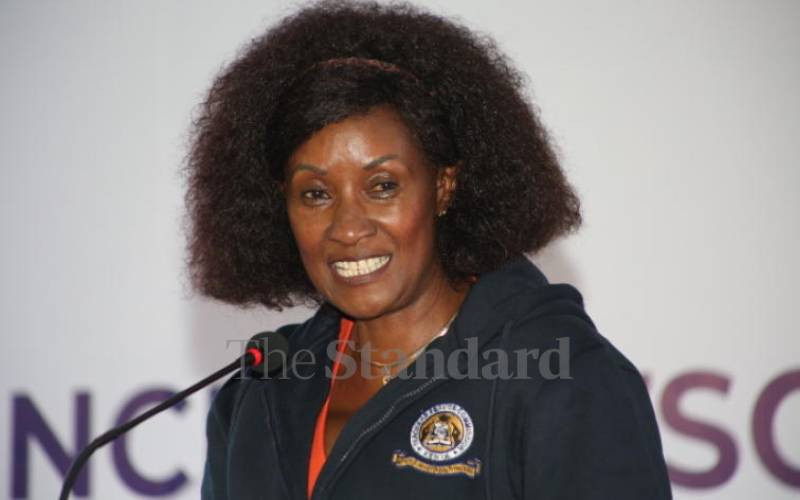David and Arnold leave school at 4pm. They then board one of the many buses contracted by Karen C Primary School to transport learners to and from school.
However, one Friday just a few days before the end of third term, they could not board the bus because they had not paid.
The Standard caught up with them at the Bomas Stage on Magadi Road opposite Galleria Mall. The two were among many other school children headed home.
One matatu after another came but they were not allowed to board. Some of the touts were clearly not keen to ferry the children.
The scramble for the matatus poses a risk to the children as the stage is usually a mess where they can easily be run over. The learners run towards vehicles even before the vehicles stop.
When this writer pleaded with a tout to carry even one of the children, his response was condescending.
Hit-or-miss
“Hii gari si ya kubeba watoi wa shule, hii si school bus. (This vehicle is not for carrying school children, it is not a school bus),” he retorted.
We spend an hour before David and Arnold get a matatu to take them home.
Such is the life of school children who depend on public service vehicles to take them home. Boarding a PSV is a hit-or-miss affair as it depends on the mood of the conductors - and touts - whose brief is to collect as much money during the morning rush hour.
Traffic Deputy Commandant Pius Barasa says the quagmire is worsened by the law, which is not clear on how children should be transported.
“Ideally, a child who is below the age of five should get a free ride while those who are above should share a seat. But as you can see in the morning and evenings when the children are going to school or back home the vehicle owners want to make maximum profits hence children cannot get space,” said Barasa.
Worryingly, going to school is a dangerous affair for most children. NTSA figures show out every 100 people who died in road accidents in Kenya last year, seven were children aged between five and 14 years. Some 3,057 people lost their lives in road crashes in the country in 2014.
This year (up October), 135 children aged between five and 14 have lost their lives on the roads.
Out of the 207 children who died, 121 were aged between five and nine. Duncan Kibongong, deputy director safety strategies at NTSA, notes that all these children were in the school age bracket.
Stay informed. Subscribe to our newsletter
“Children have a limitation of size which leads to difficulty in seeing traffic, being seen, limitations of vision, hearing, attention span and judgement which combine to put children at a greater risk,” says Dr Kibogong.
World Health Organisation (WHO) records show that one out of every seven people who die on the roads are children below the age of 18. Shockingly, About 90 per cent of children who die in road crashes worldwide are in low and middle-income countries.
This means that a child is killed on the road every four minutes, leading to 187,000 deaths annually. Nine out of 10 deaths occur in low-and-middle income countries.
But how did we get here as a nation?
Pius Barasa, the deputy traffic commandant, says it is a failure of planning.
“If you looked at the estates in Nairobi and how they were planned, there was a school, a hospital and a social hall among other amenities but with population explosion and poor planning, children are forced to go to school far from where they live and this predisposes them to dangers on the road,” says Barasa.
But Mr Barasa also blames parents for abdicating their duties of taking care of their children as the law requires.
He charges, “When a road crash occurs and a child is knocked down, then the parent should be charged but in most cases this is not done because society feels the parent has suffered enough by losing that child, yet it was the responsibility of the parent to ensure the child is safe.”
 The Standard Group Plc is a
multi-media organization with investments in media platforms spanning newspaper
print operations, television, radio broadcasting, digital and online services. The
Standard Group is recognized as a leading multi-media house in Kenya with a key
influence in matters of national and international interest.
The Standard Group Plc is a
multi-media organization with investments in media platforms spanning newspaper
print operations, television, radio broadcasting, digital and online services. The
Standard Group is recognized as a leading multi-media house in Kenya with a key
influence in matters of national and international interest.
 The Standard Group Plc is a
multi-media organization with investments in media platforms spanning newspaper
print operations, television, radio broadcasting, digital and online services. The
Standard Group is recognized as a leading multi-media house in Kenya with a key
influence in matters of national and international interest.
The Standard Group Plc is a
multi-media organization with investments in media platforms spanning newspaper
print operations, television, radio broadcasting, digital and online services. The
Standard Group is recognized as a leading multi-media house in Kenya with a key
influence in matters of national and international interest.



